
6 November 2025
Sunlight and colour: the hidden drivers of microfiber pollution in the ocean
- Plastics
You have already read here that the fashion industry creates a gigantic amount of textile waste, but what happens to all our discarded textiles? If we want to evolve towards a circular economy, our used textiles will get a new, sustainable destination. Unfortunately, this is not always the case. How far have the recycling techniques progressed? And what percentage of textile waste is actually recycled? COSH! found out for you.
Textiles collected via clothing containers consist of 55% reusable textiles and an average of 37% suitable for recycling (Boer Group figures). But how much of this is actually recycled? In reality, only 1% of all post-consumer textiles are recycled into new clothing. 12% is downcycled into something of lesser value and 87% of textile waste is pure loss. The amount of clothes that is recycled is thus much lower than the marketing campaigns of the big fast fashion chains would suggest.
Greenpeace also conducted research on recycling. “We found many good ideas and positive initiatives on how to slow down the flow of materials, increase their circularity and reduce their environmental impact. These initiatives urgently need to be scaled up.
At COSH!, we researched the recycling market and talked to the large sorting companies. We questioned textile fibre suppliers and yarn makers about the inflow of their textiles in the hope of creating a traceable textile cycle.
Second-hand textiles exist in all sorts of qualities and have various unprecedented chemical colourings. Moreover, the textiles consist of different types of yarn and fibre lengths. This makes it extremely difficult to recycle post-consumer clothing into new clothing on a large scale.
This is at odds with what large fast fashion chains communicate. They collect clothing in large quantities and claim that their recycling is successful. Anyone who understands the complexity of textile recycling knows that it is almost impossible to recycle large quantities of low-quality clothing correctly. At COSH!, we therefore certainly question these kind of campaigns.
A good example are companies that make large runs of work clothing from one type of material (such as Sioen and Alsico in Belgium, but also Schijvens Mode in the Netherlands). Because this clothing consists of only one type of fibre, it is easy to recycle. The companies collect the clothing after use and turn it into new yarn. This kind of recycling system is more reliable than mass post-consumer textile processing where the origin of the textile is unknown.
Unfortunately, it is not only post-consumer clothing that is a major problem in the fashion industry. A large part of the clothing does not even reach the consumer. Clothing brands produce in ever larger quantities. This is first of all advantageous for the clothing brands, who thus get a better price per product. And also for the manufacturer, who can employ more staff as a result. But these large volumes of clothing also result in overproduction and stock surpluses.
Unsold stocks are rarely reused. Instead, they are dumped or burned to avoid flooding the market. This process not only wastes time, money, energy and resources. Above all, it has a huge impact on the environment.
Every year, 100 billion dollars’ worth of textile waste is produced. If we were to capture and recycle this amount, we could create many new jobs in collection, sorting and recycling facilities. Recycling would therefore not only be positive for the environment, but also for our economy.
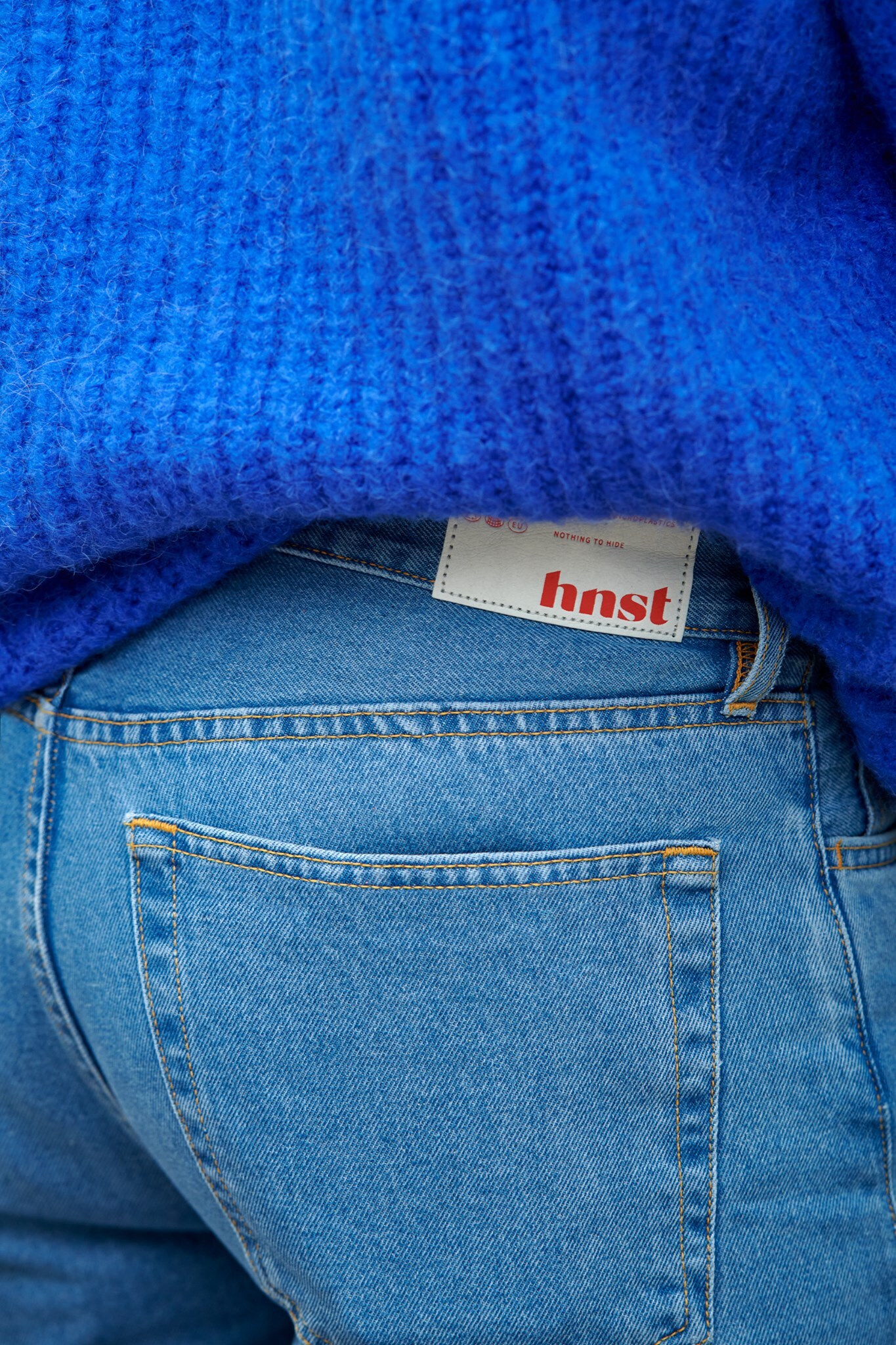
Not all garments are equally easy to recycle. ltems that consist of a mix of different fibres make the recycling process much more difficult. If a garment is made of 100% cotton, for example, it is much easier to recycle. For example, the Belgian brand HNST recycles old jeans and incorporates them into their new models, and MUD jeans also incorporates old jeans into their collections thanks to a take-back system.
Resortecs in Brussels is an engineering company that looks for different solutions to make the recycling of clothes easier. Dismantling clothing is very labour-intensive and makes the recycling process expensive and time-consuming. Buttons and zips in particular currently require precise manual labour.
Thanks to, among other things, a smart stitching technique, melting stitching threads and an industrial dismantling oven, Resortecs wants to make the recycling process five times faster and make textiles easier to re-use. The technology is still in its infancy, but the first pilot projects with large chains have been set up.
At the moment, Resortecs focuses on large clothing companies that want to recycle their overstock (‘pre-consumer waste’) by using the melting yarn. In the long term, Resortecs wants to do the same for second-hand textiles (‘post-consumer waste’), but at the moment the recycling industry is not ready for this at all.
The Belgian company Valvan Baling systems developed the technology Fibersort, which ensures a more efficient and thorough sorting of textile surpluses.
The Fibersort sorting process comes before the refining or chemical recycling process and sorts textiles into 14 types (such as wool, cotton, viscose, polyester, nylon, poly/cotton,…), colour and structure. This results in about 90 different, thoroughly sorted fractions, making the further recycling process much more feasible and less labour-intensive. A Fibersort machine sorts 900 kg per hour. A big difference with a person, who can sort an average of 250 to 300 kg per day.
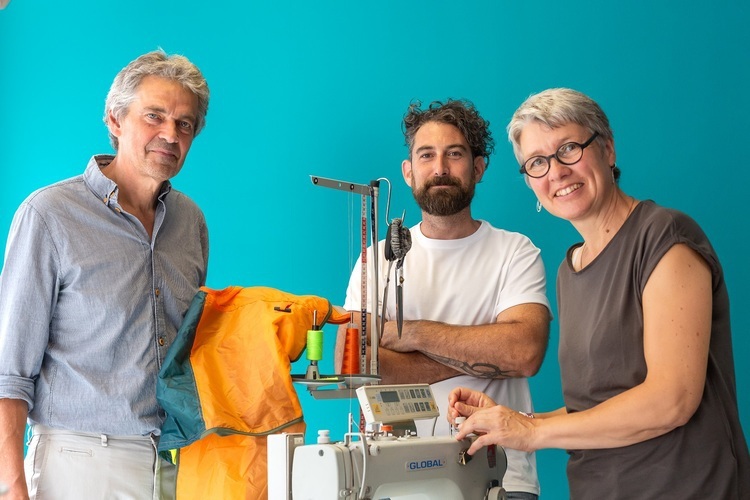
In the brand-new circular clothing workshop in Mechelen, Cilab, various entrepreneurs are investigating techniques to make the recycling process of textiles possible on a larger scale and thus to promote the reuse of textiles. The entrepreneurs mainly aim at upcycling surplus textile from brands and overstock from retail chains into new clothing.
In the pilot project, Woodyloop , 1400 accessories were produced from post-consumer nightwear by the Woody Group in collaboration with Sibille Diederichs GCV. Accessories that save textiles from landfill!
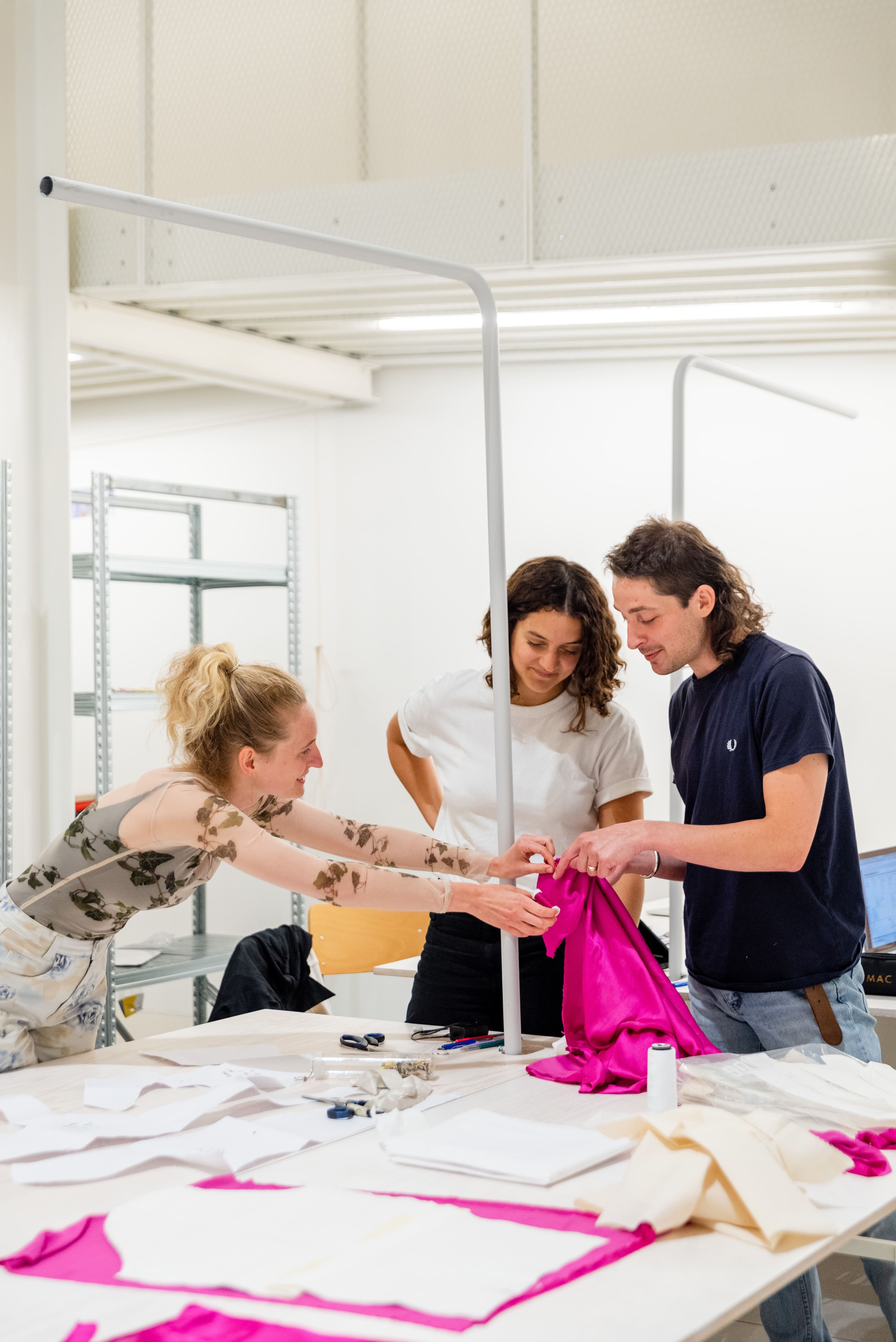
Designers Doriane van Overeem (BE), Karolina Jurikova (CZ) and Maximilian Rittler (AUT) created a sustainable and affordable fashion collection together, commissioned by MAD Brussels and in the context of the United Fashion Festival. This collection was released under the name MAD Brussels Daily. Veronique Branquinho, Peggy Acke (MAD) and Niki de Schryver ( Founder COSH!) provided tips and guidance with their expertise!
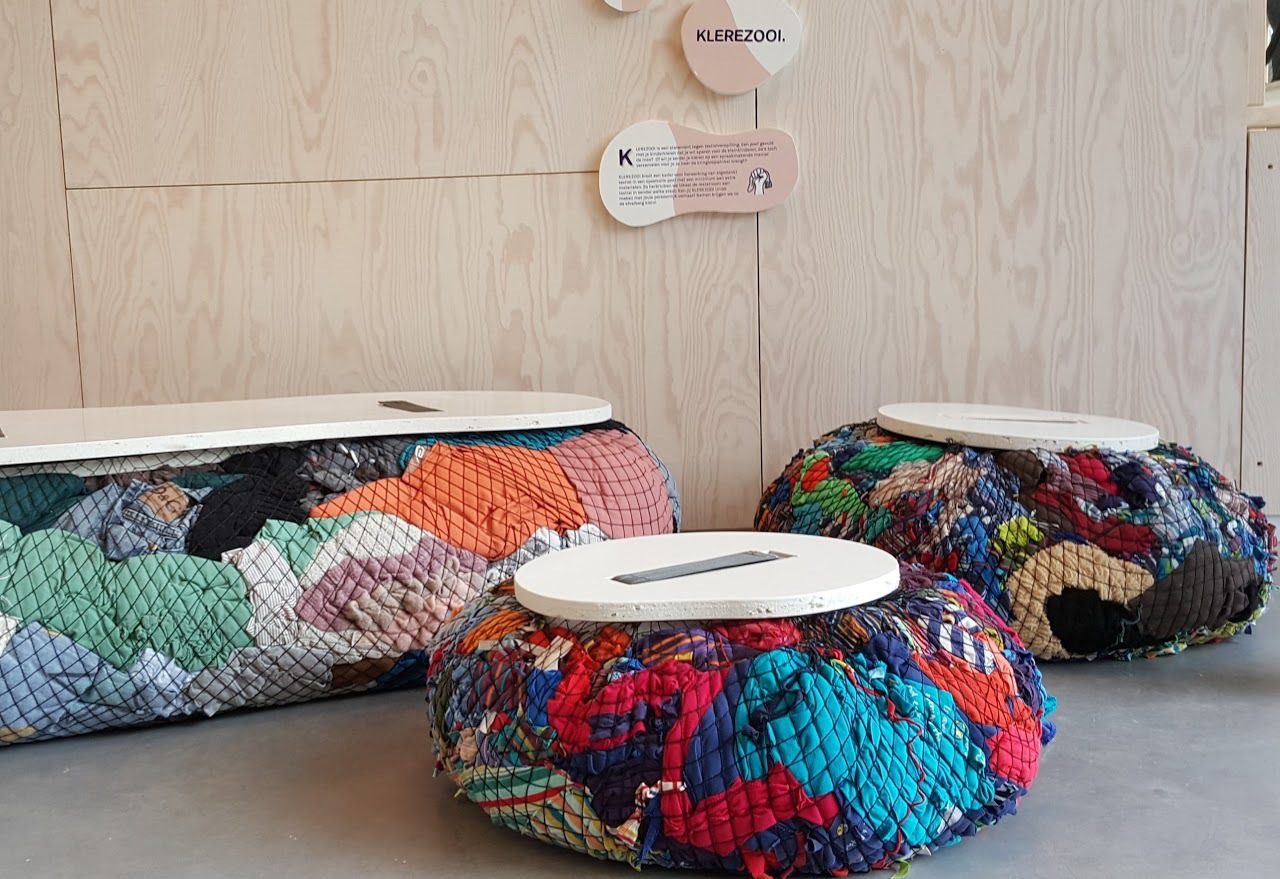
In Circuit, the circular hub of De Kringwinkel Antwerp, you can now find the KLEREZOOI poufs. These were developed in collaboration with Onbetaalbaar and The Woody Group. From now on you say no to textile waste in a stylish interior!
In mechanical recycling, textiles are recycled by being cut up, fibbed and spun into new yarn. This type of recycling is possible for cotton and wool and may only contain a maximum of 5 percent elastane. The strength of the recycled fibre depends very much on the quality of the original textile. At present, a new fibre is often added to the recycled material in order to guarantee sufficient strength of the new yarn.
Examples of mechanical recycling for consumers:
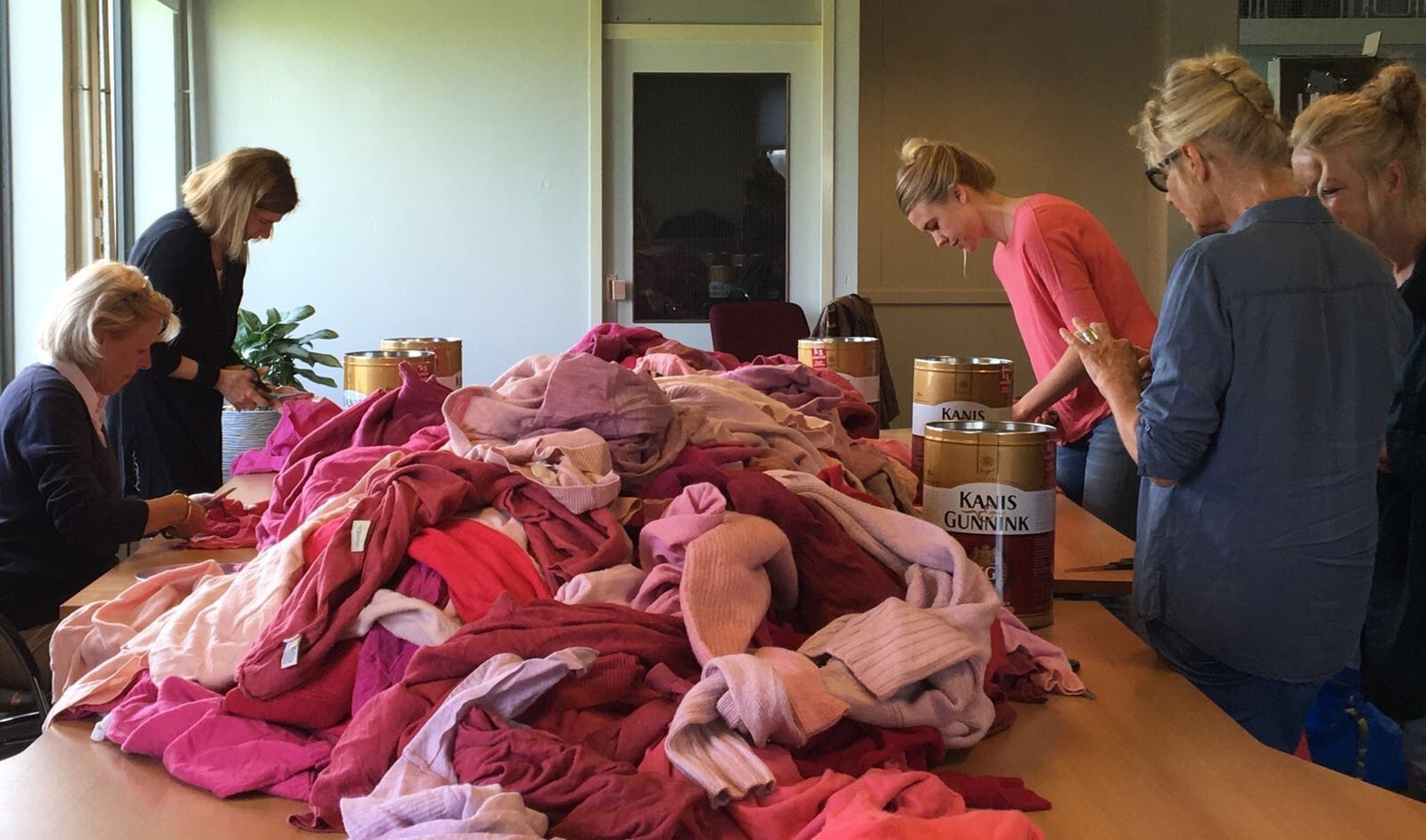
Loopalife is a Dutch circular clothing brand that makes new clothes from discarded textiles that they collect from local sorting centres. The brand sorts the clothes by colour and material and removes buttons, zips and labels. Afterwards, they refresh the textiles through mechanical recycling. The recycled fibres are then merged with various new fibres and spun into yarn. With this yarn, new garments are made.
The clothing brand Rifo makes use of various circular materials. The clothing brand makes new hats, scarves and jumpers from already worn cashmere jumpers and recycled jeans from minus 95% cotton into new jeans, clothing and jumpers. The Italian company Rifo also recovers lace from cutting tables in factories. Rifo works with mono-materials as much as possible. Therefore, they only mix recycled cotton with virgin cotton, and recycled cashmere with virgin cashmere. This way, the Rifo garments can be recycled more easily after use.
When a material consists of a mixture of a plant material and a material made from petroleum (such as polyester or polyamide), chemical recycling is necessary. One of the two materials is then dissolved with a chemical additive and is lost in the process.
Not all chemical recycling involves the separation of two materials. The Dutchmen Gerrit Bouwhuis and Ger Brinks developed a new innovative fibre called SaXcell, made of recycled cotton. Using chemical recycling, the company recycles one kilogram of cotton into 980 grams of yarn! This way, the company makes a major contribution to a circular textile chain. The Boer Group also believes in Saxcell and has been making a contribution since 2016.
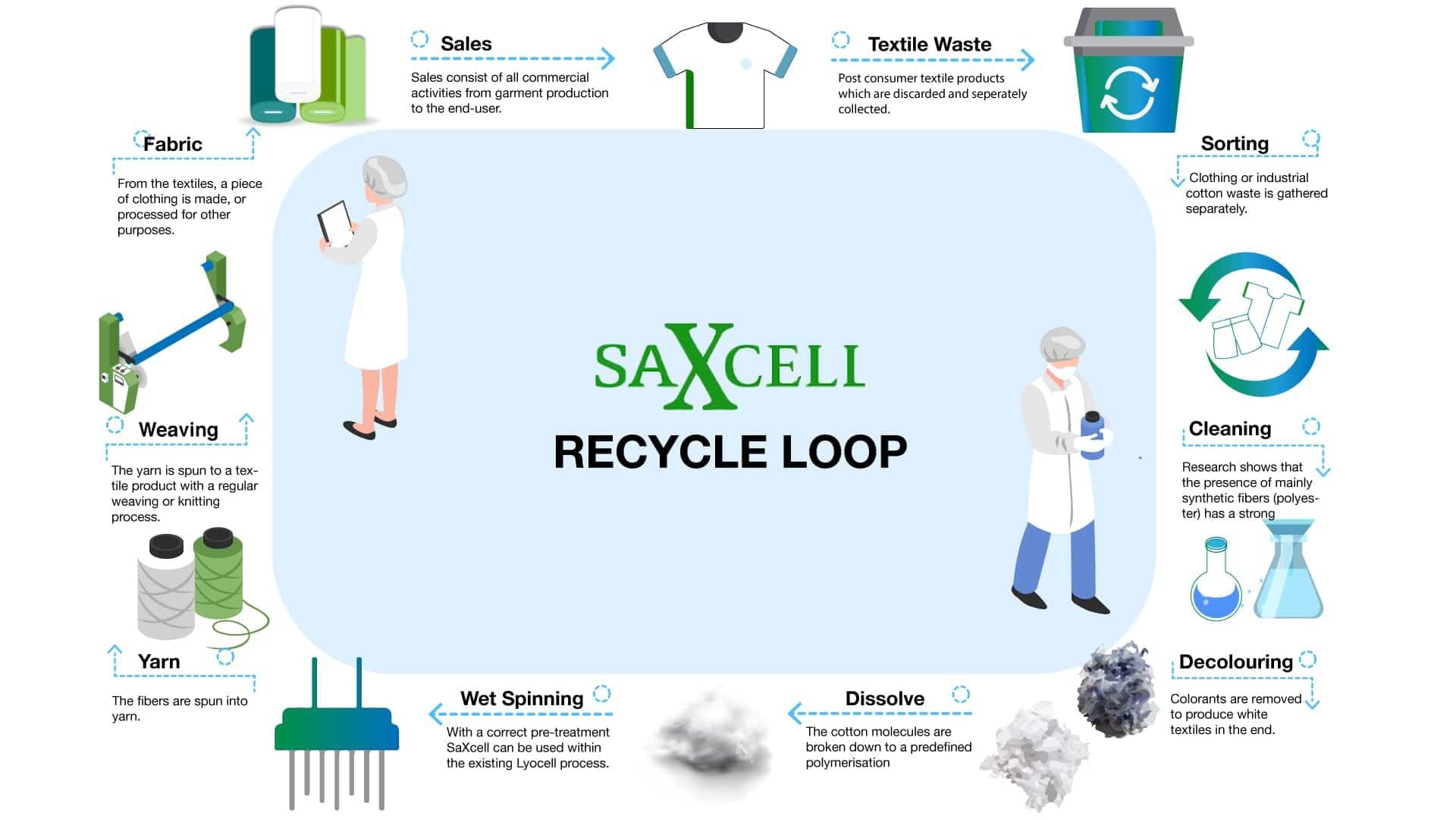
Swedish company Renewcell recycles cotton and viscose into pulp that can be used to make new, man-made cellulose fibres. The plant processes both pre- and post-consumer textile waste and has the capacity to produce 7,000 tonnes of Renewcell pulp per year. Thanks to this smart recycling, the company contributes to a circular chain!
Did you know that textile recycling is on average 30 to 50% more expensive than making new fibres? The Belgian textile company Concordia wanted to change this and joined forces with PurFi Global. This American company has developed a technology for reducing textile waste to the original fibre without losing any fibre weight, so that it can be spun into new yarn. Concordia Textile strongly believes in a circular model whereby they can recycle corporate textiles and use them as raw materials again and has already been singled out by various experts as the leading company in the field of recycling.
Thermal recycling is currently only reachable for pre-consumer waste because polyester dyes and coatings can contain all kinds of chemicals that are not shown on the garment label. When a garment is recycled with chemicals, it cannot be guaranteed that the end result only contains the acceptable chemical dyes.
A dress from a fast fashion brand will contain processed and toxic dyes and another dress from a designer may be pure quality polyester that fully complies with the standards of the European chemicals legislation. A new garment developed from this in Europe cannot be guaranteed to contain only the acceptable chemical dyes in the end result.
Chemical substances in the EU are subject to the REACH legislation. REACH sets out new rules on the marketing of pure chemical substances, mixtures and chemical substances incorporated into goods. It ensures that companies are responsible for managing the risks to health and the environment that may arise from residues of chemical processing in substances. |

5 reasons to introduce second hand clothes in your wardrobe.
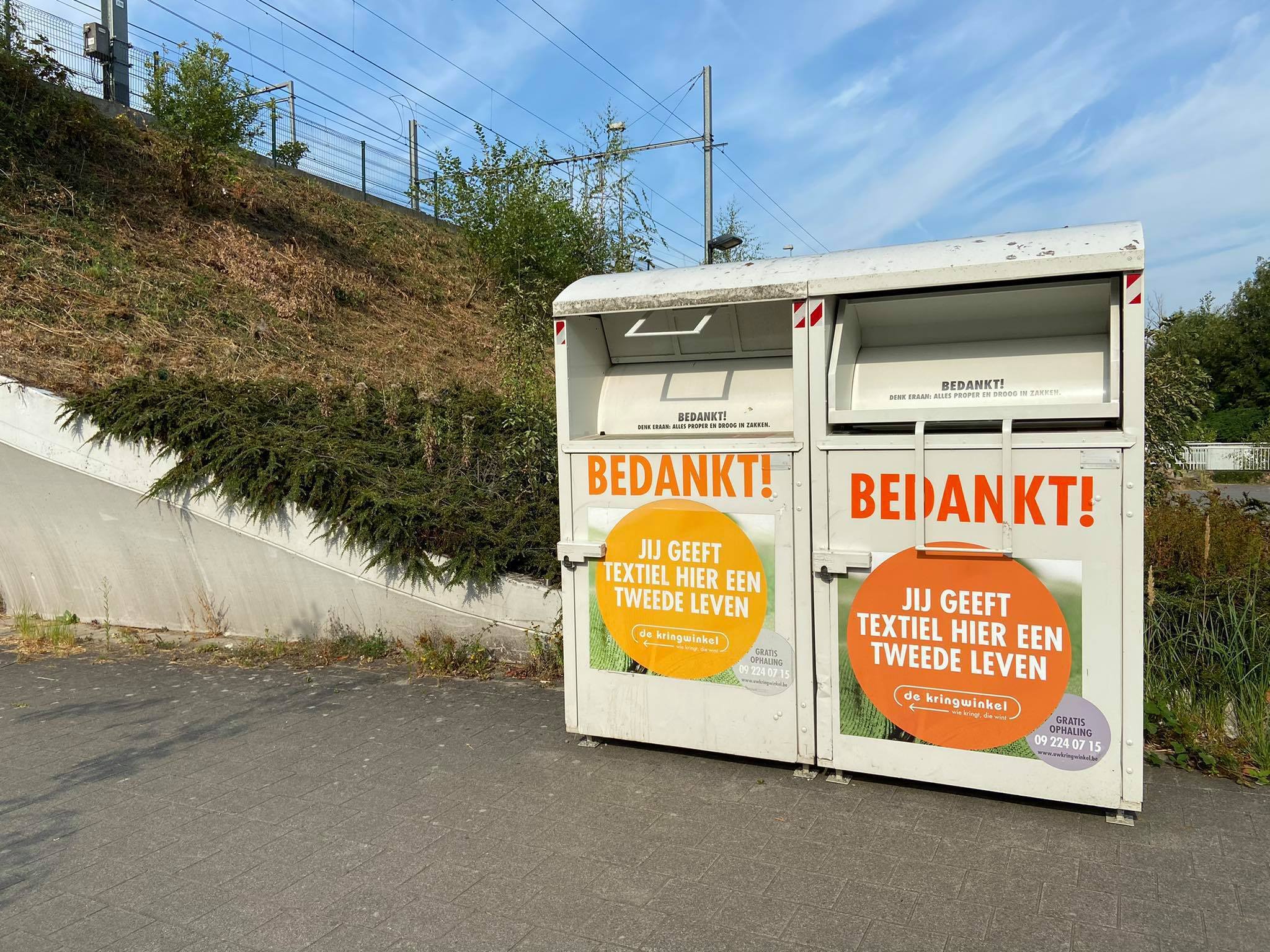
Where to donate textiles in a responsible way?
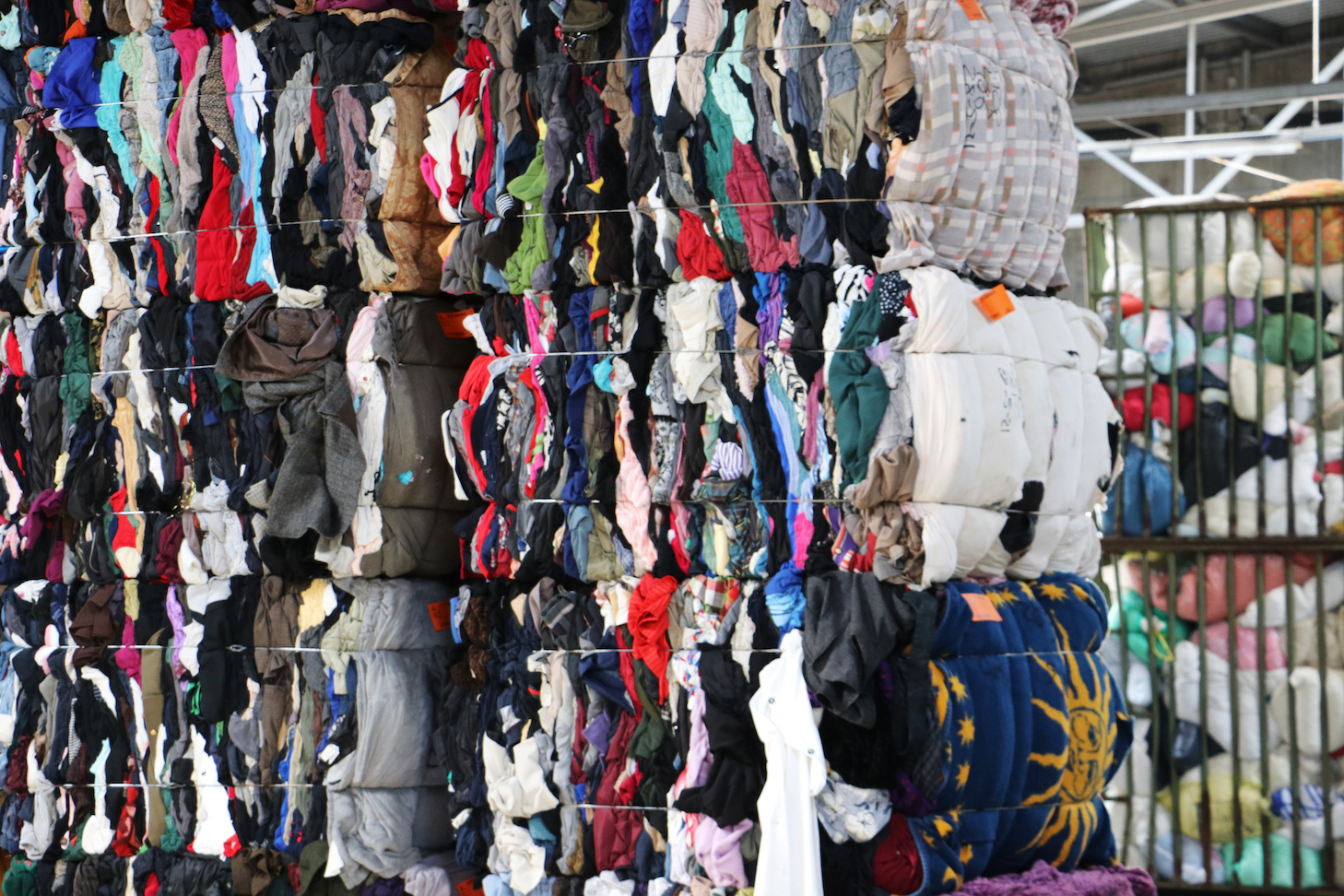
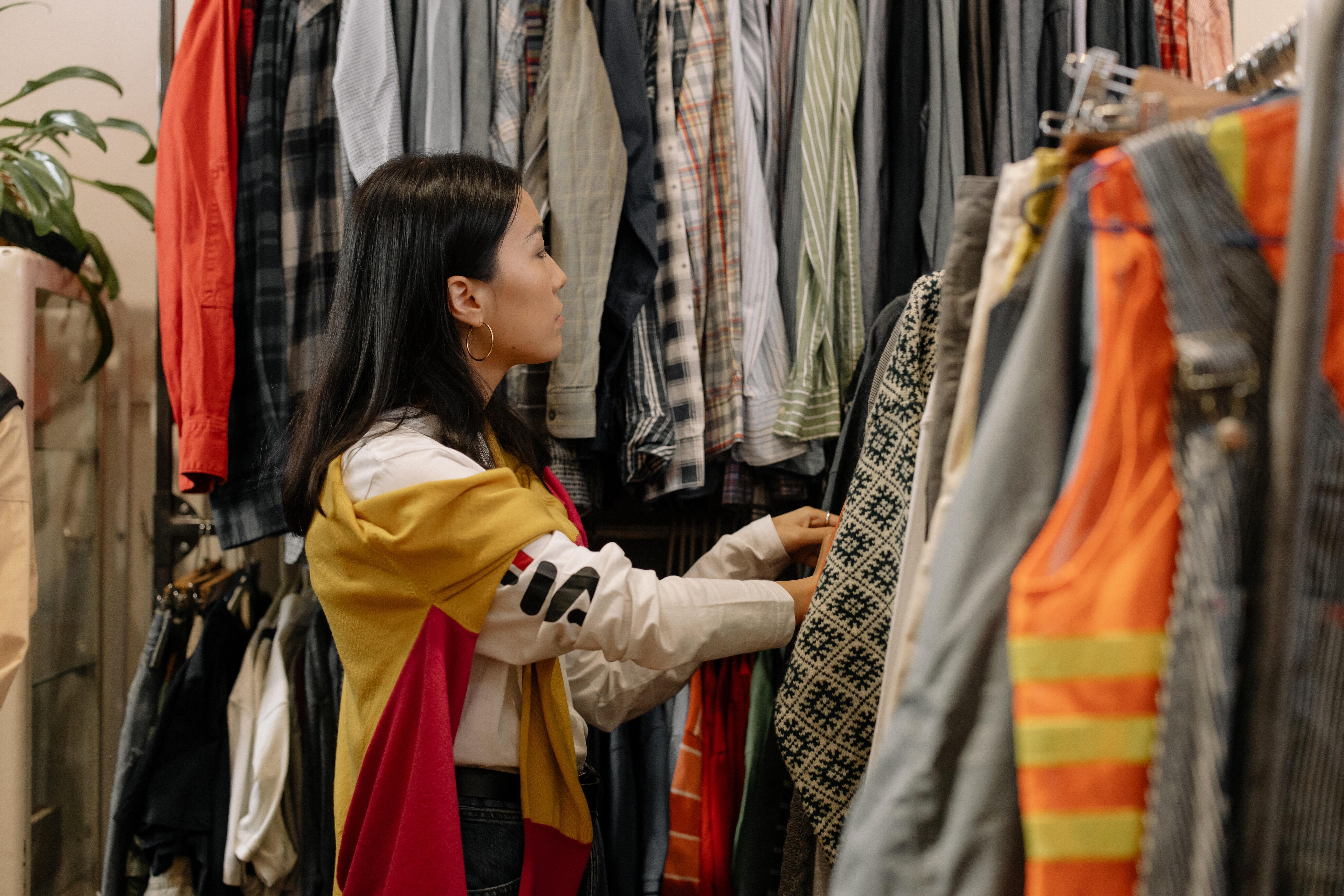

6 November 2025

29 October 2025

20 October 2025